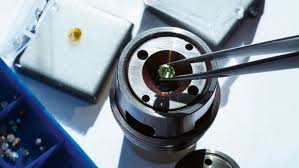
Breaking News
 LIVE ELECTION RESULTS: New York mayor, NJ & VA governor, Prop 50, Trump endorsements, latest vote
LIVE ELECTION RESULTS: New York mayor, NJ & VA governor, Prop 50, Trump endorsements, latest vote
 Sen. Markwayne Mullin Reveals Schumer Held Secret BACKROOM MEETING...
Sen. Markwayne Mullin Reveals Schumer Held Secret BACKROOM MEETING...
 RIP NYC - Muslim Communist Zohran Mamdani Wins New York City Mayoral Race
RIP NYC - Muslim Communist Zohran Mamdani Wins New York City Mayoral Race
 Dramatic Footage Shows UPS Cargo Jet Crashing At Louisville Airport
Dramatic Footage Shows UPS Cargo Jet Crashing At Louisville Airport
Top Tech News
 Japan just injected artificial blood into a human. No blood type needed. No refrigeration.
Japan just injected artificial blood into a human. No blood type needed. No refrigeration.
 The 6 Best LLM Tools To Run Models Locally
The 6 Best LLM Tools To Run Models Locally
 Testing My First Sodium-Ion Solar Battery
Testing My First Sodium-Ion Solar Battery
 A man once paralyzed from the waist down now stands on his own, not with machines or wires,...
A man once paralyzed from the waist down now stands on his own, not with machines or wires,...
 Review: Thumb-sized thermal camera turns your phone into a smart tool
Review: Thumb-sized thermal camera turns your phone into a smart tool
 Army To Bring Nuclear Microreactors To Its Bases By 2028
Army To Bring Nuclear Microreactors To Its Bases By 2028
 Nissan Says It's On Track For Solid-State Batteries That Double EV Range By 2028
Nissan Says It's On Track For Solid-State Batteries That Double EV Range By 2028
 Carbon based computers that run on iron
Carbon based computers that run on iron
 Russia flies strategic cruise missile propelled by a nuclear engine
Russia flies strategic cruise missile propelled by a nuclear engine
 100% Free AC & Heat from SOLAR! Airspool Mini Split AC from Santan Solar | Unboxing & Install
100% Free AC & Heat from SOLAR! Airspool Mini Split AC from Santan Solar | Unboxing & Install
New superconductivity record edges closer to room temperature

Since they can conduct electricity with absolutely no loss, they could be revolutionary if not for one little problem: they only work if kept extremely cold. But now researchers at Max Planck have reported a new record high temperature for superconductivity, at a toasty -23° C (-9.4° F).
Normally, when electrons are flowing through a conductor their negative charge means they repel each other, sending them bouncing off nearby atoms. That in turn wastes a decent chunk of their energy, and we can feel this unwanted side effect as the heat given off by electronic devices.
But that doesn't alway have to be the case. Superconductors keep electrons flowing with no resistance at all, which can go a long way towards improving electrical circuits and storage – for example, a loop of superconducting wire can keep an electrical current flowing indefinitely, with no need for a power source.
Unfortunately, for now superconductors need to be chilled to extremely low temperatures to work – usually below -234º C (-389º F), which all but rules them out for most practical uses. Ideally they would work at room temperature, but the best attempts so far have only gotten them to -70° C (-94° F).



